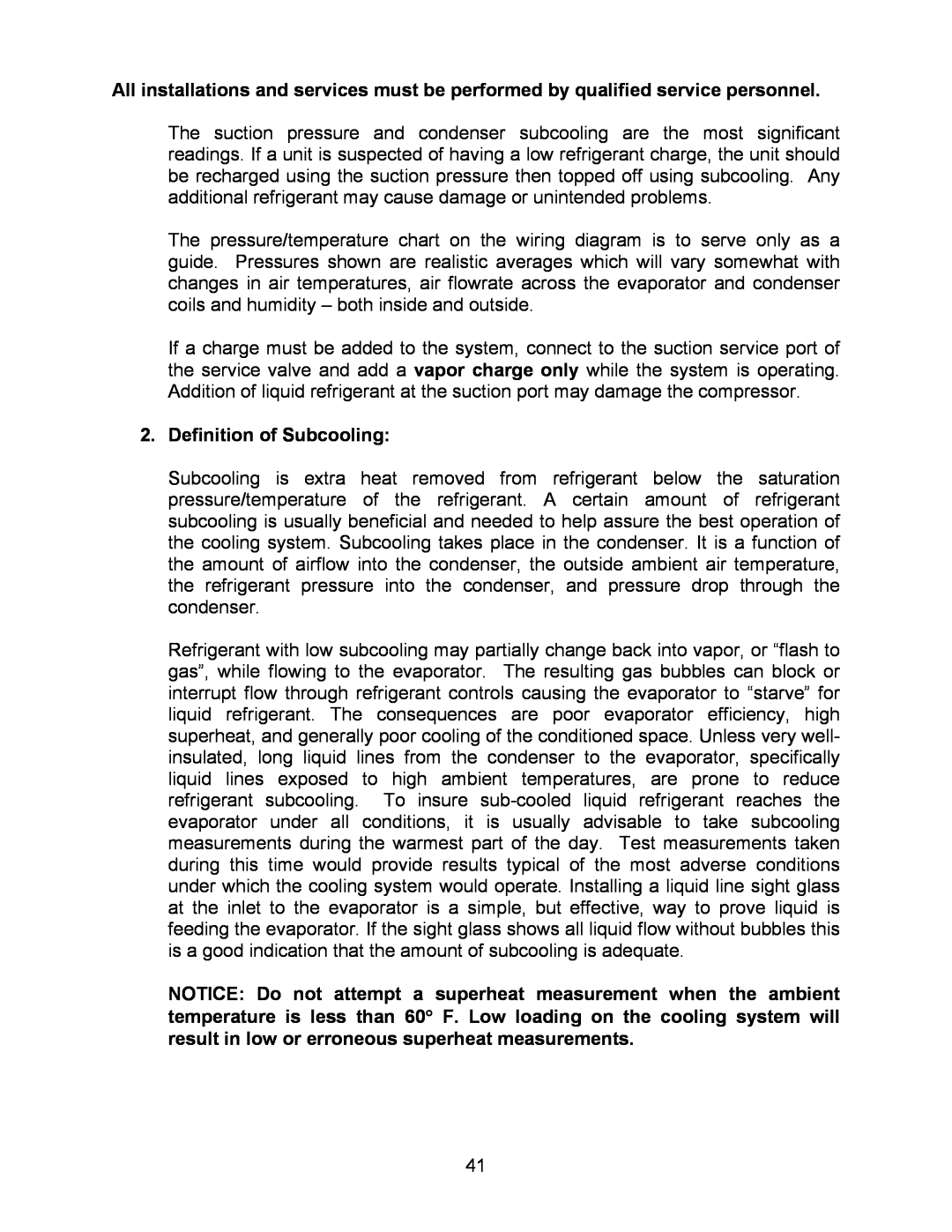All installations and services must be performed by qualified service personnel.
The suction pressure and condenser subcooling are the most significant readings. If a unit is suspected of having a low refrigerant charge, the unit should be recharged using the suction pressure then topped off using subcooling. Any additional refrigerant may cause damage or unintended problems.
The pressure/temperature chart on the wiring diagram is to serve only as a guide. Pressures shown are realistic averages which will vary somewhat with changes in air temperatures, air flowrate across the evaporator and condenser coils and humidity – both inside and outside.
If a charge must be added to the system, connect to the suction service port of the service valve and add a vapor charge only while the system is operating. Addition of liquid refrigerant at the suction port may damage the compressor.
2.Definition of Subcooling:
Subcooling is extra heat removed from refrigerant below the saturation pressure/temperature of the refrigerant. A certain amount of refrigerant subcooling is usually beneficial and needed to help assure the best operation of the cooling system. Subcooling takes place in the condenser. It is a function of the amount of airflow into the condenser, the outside ambient air temperature, the refrigerant pressure into the condenser, and pressure drop through the condenser.
Refrigerant with low subcooling may partially change back into vapor, or “flash to gas”, while flowing to the evaporator. The resulting gas bubbles can block or interrupt flow through refrigerant controls causing the evaporator to “starve” for liquid refrigerant. The consequences are poor evaporator efficiency, high superheat, and generally poor cooling of the conditioned space. Unless very well- insulated, long liquid lines from the condenser to the evaporator, specifically liquid lines exposed to high ambient temperatures, are prone to reduce refrigerant subcooling. To insure
NOTICE: Do not attempt a superheat measurement when the ambient temperature is less than 60° F. Low loading on the cooling system will result in low or erroneous superheat measurements.
41
